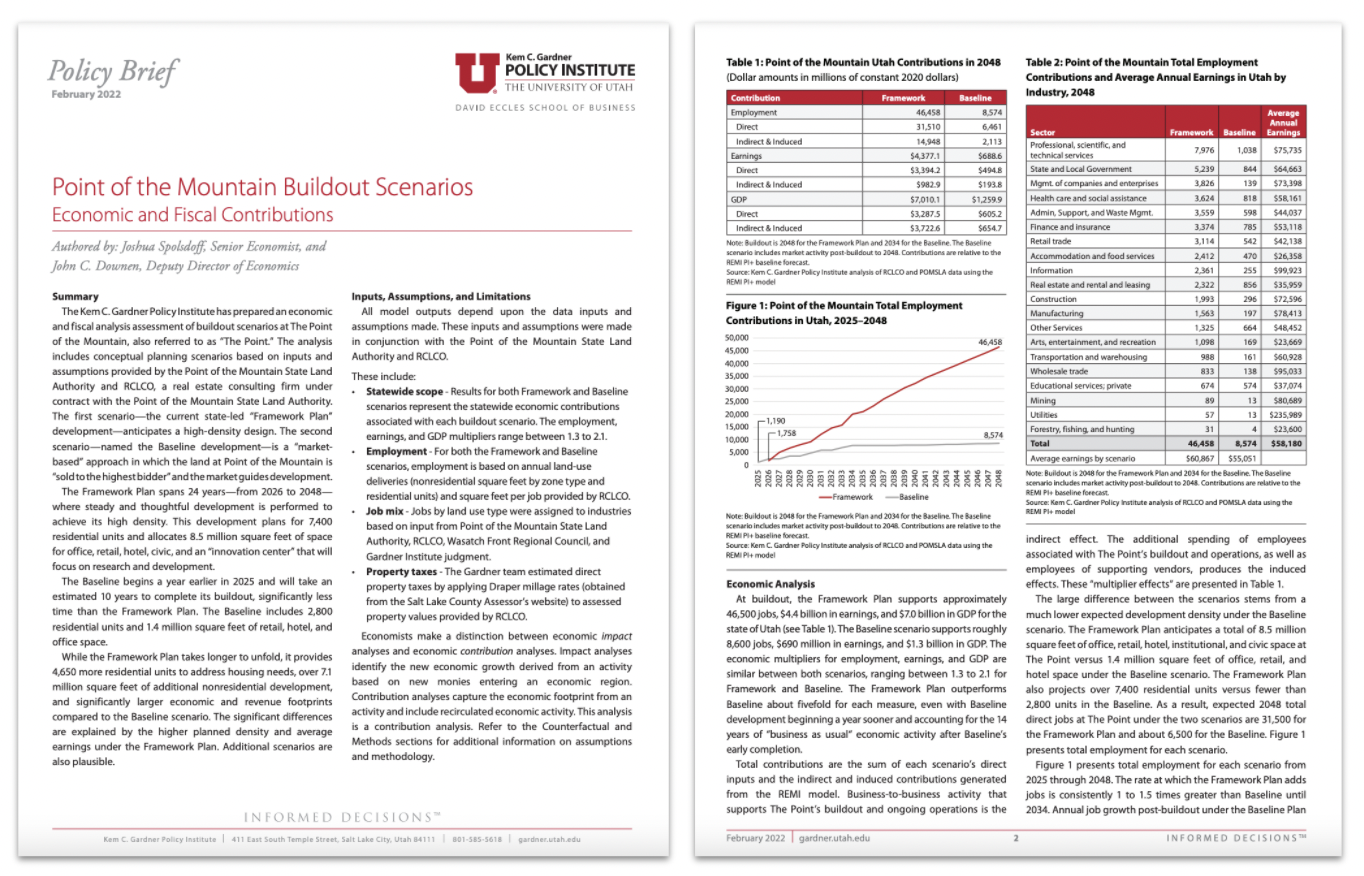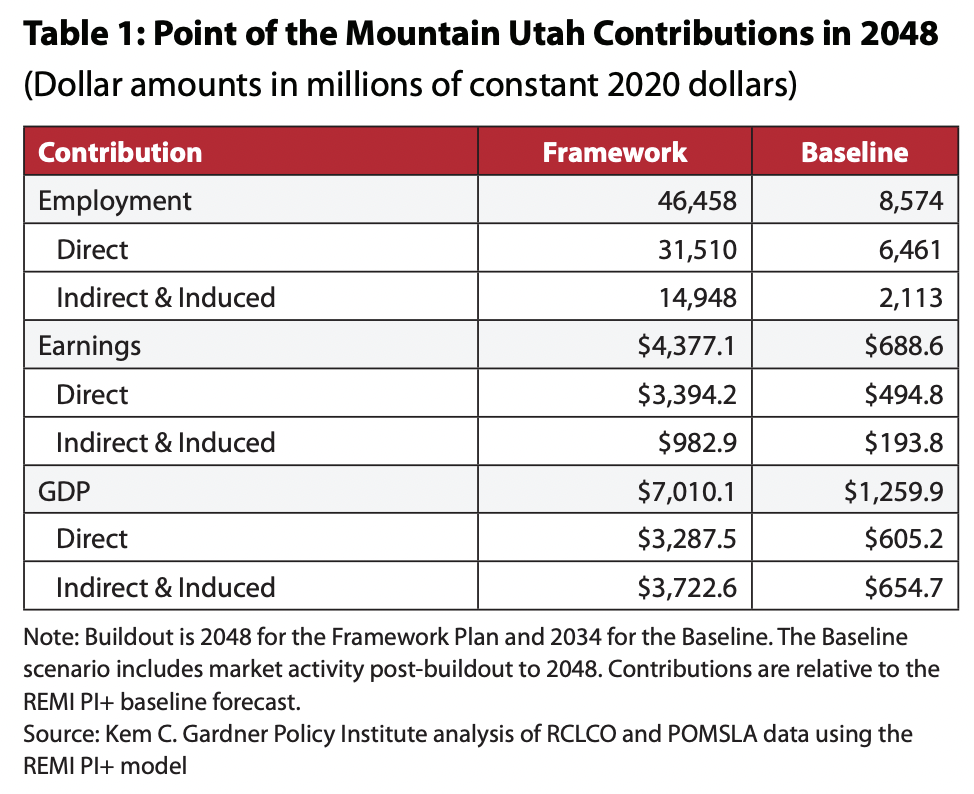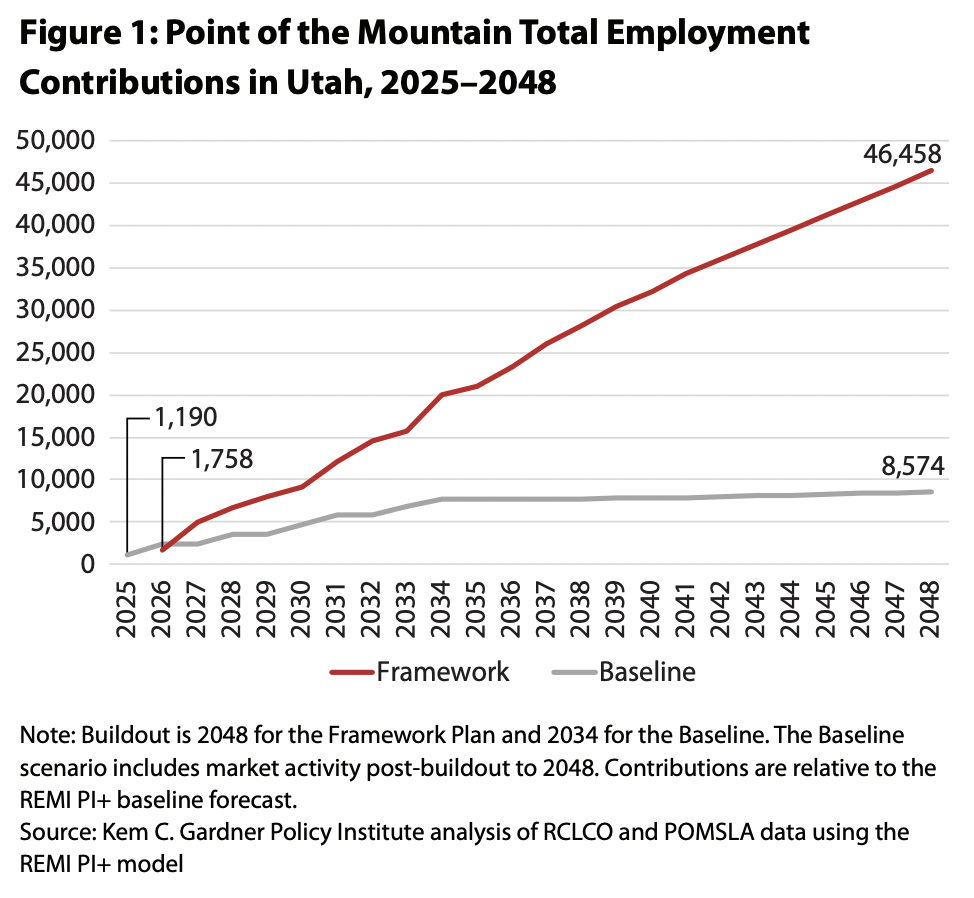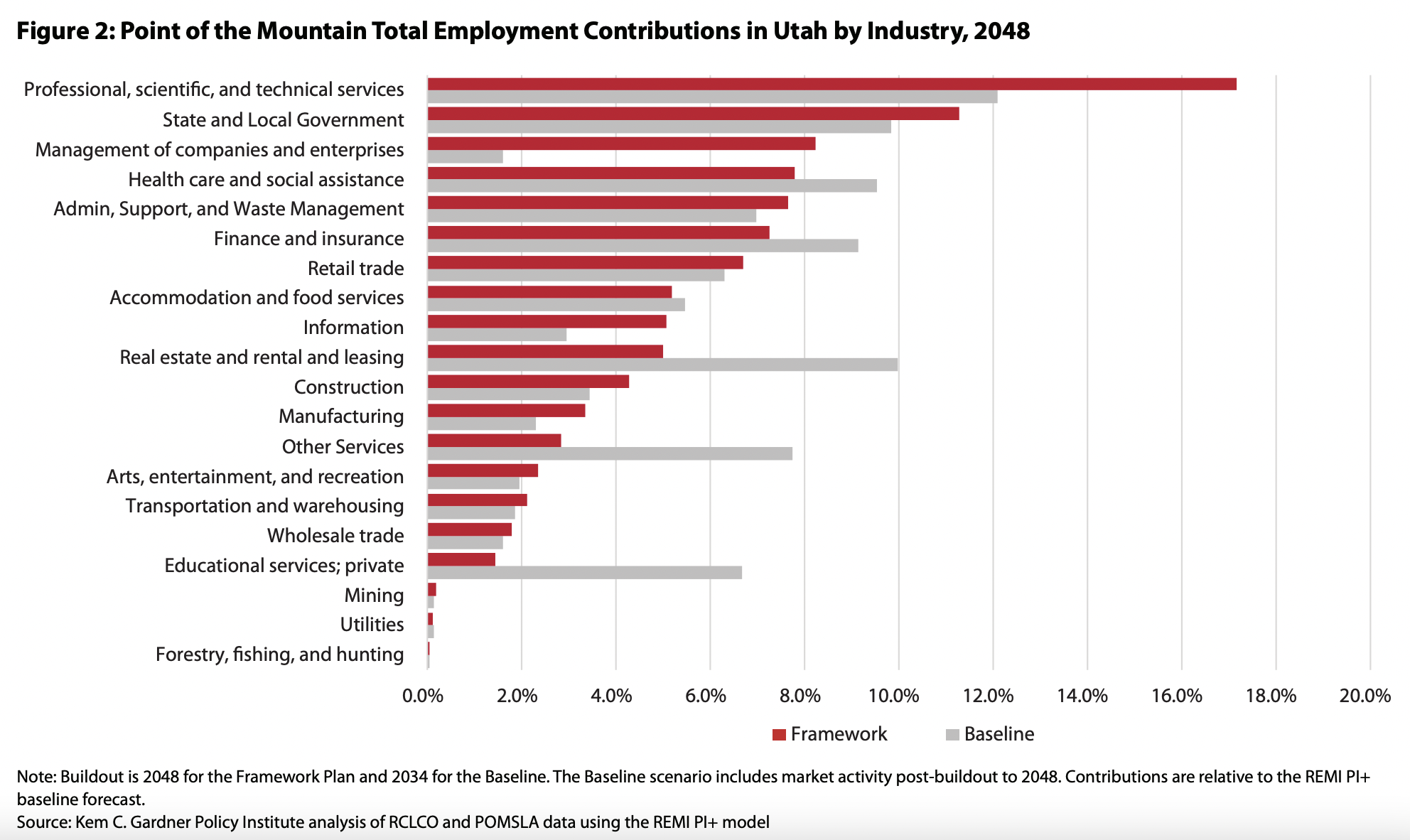ECONOMIC ANALYSIS
The Economic and Fiscal Contributions of The Point

In February 2022, The Kem C. Gardner Policy Institute released a study featuring an economic and fiscal analysis of buildout scenarios at The Point. Using an economic contribution analysis, the study found that The Point’s Framework Plan, with high-quality development, housing and jobs, creates a significant economic opportunity for Utah.
The study compares two scenarios for the prison redevelopment site in Draper, Utah. The first scenario—The Point’s “Framework Plan”—anticipates a high-quality, mixed-use, amenity-rich development consistent with the Framework Plan. The second scenario—the baseline development—follows a market-based approach where the land is “sold to the highest bidder” and the market guides development. By all measures, the study found that the Framework Plan materially outperforms the baseline development.

The Framework Plan supports approximately 46,500 jobs, $4.4 billion in annual earnings and $7 billion in annual GDP for Utah at buildout. Whereas, the baseline development would support roughly 8,600 jobs, $690 million in annual earnings and $1.3 billion in annual GDP. When compared with the baseline development, the Framework Plan features a stronger rate of job growth, higher-paying jobs, increased fiscal contributions and more residential, office, retail and hotel space (Table 1).
Higher-Paying Jobs and Annual Earnings
The Framework Plan supports a greater concentration of higher-paying jobs than Baseline. Annual earnings per job within the Framework scenario are $5,800 (10.6%) higher compared to the Baseline scenario. Average annual earnings for all industries are nearly $60,900 in the Framework Plan and $55,000 for the baseline development.
Stronger Rate of Job Growth
The Framework Plan supports 46,500 jobs, while the baseline development provides 8,600 jobs. From 2025 to 2048, the rate at which the Framework Plan adds jobs is consistently 1 to 1.5 times greater than the baseline until 2034, when annual job growth post-buildout under the baseline levels off significantly, while the Framework Plan continues to add employment until its buildout is completed in 2048 (Figure 1).


Increased Fiscal Contributions
The fiscal return to state and local jurisdictions is significantly less for the baseline development compared to the Framework Plan, with net respective revenues averaging $4.1 million per year and $8.2 million in 2048. The Framework scenario averages 4.5 times more net state revenue per year compared to the baseline. The substantial difference stems from more valuable development and higher average earnings under the Framework Plan.
Based on the assumptions and inputs provided, The Point’s Framework Plan creates a significant economic contribution and offers Draper, Salt Lake County, and the state substantial economic opportunity. The Framework Plan would further the state’s objectives to support high-quality development, housing and jobs.
For more information, view the full Gardner Institute study and The Point’s Framework Plan.